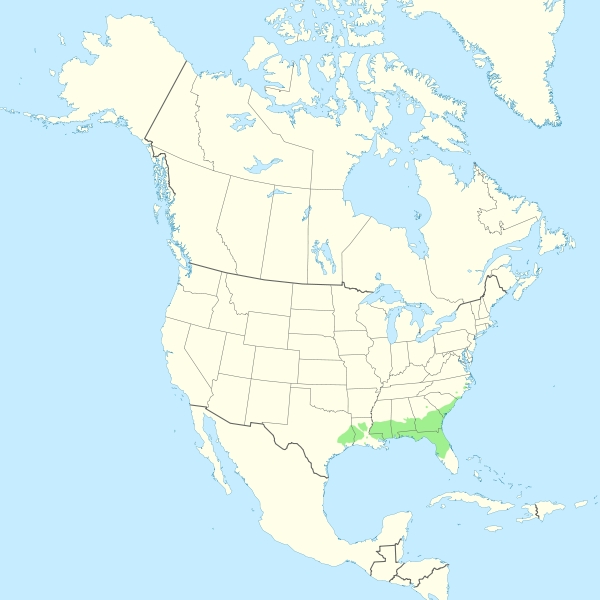Southern Magnolia : Climate Change?

A map showing the range of Magnolia grandiflora in North America. (From Wikimedia Commons by Halava).
Upon learning about the Southern magnolia that had I had seen so often as a freshman, I was intrigued to find out that such a specimen would be able to exist in the cold climate of Vermont. I couldn’t help but ask myself “how did it get here?” and “how is it surviving? “. The Southern magnolia is native to the Southeastern states along the coast, especially in Louisiana, Mississippi, and Alabama, but is now undergoing range expansion into New England, the Midwest and the Southwest. The Magnolia (it.) family historically needs a warm, rainy climate with well-draining soil.
A study was done that looked at Southern magnolias already present north of the species range in the temperate deciduous forest of North Carolina. This study explains that the range expansion of Southern magnolias is specifically intriguing because in Europe broad-leaved evergreens have been used as climate indicators. Species that are described as climate indicators generally respond very dramatically to constant or increasing seasonal variation within their environment. They also do not adapt well to these changes when they occur. Minimum winter temperatures have been rising, leading to the range expansion of Southern magnolias in this study. Due to the increase in average winter temperatures, such as in Chapel Hill, North Carolina, the growing seasons in many places have also been expanding.
Something I found particularly interesting about this study is that the maximum diameter-at-breast-height (dbh) recorded by these analysts was 9.8 centimeters while the one Southern magnolia found on campus has a dbh of 7.6 centimeters. Recording the dbh of a standing tree is the most common way to measure the diameter of a tree. Although the Southern magnolia is expanding its range across the country it does not seem to do as well in these new climates as in its native regions. Depending on the success of this particular Southern magnolia on the University of Vermont campus there should be a conversation on whether or not more should be planted.
